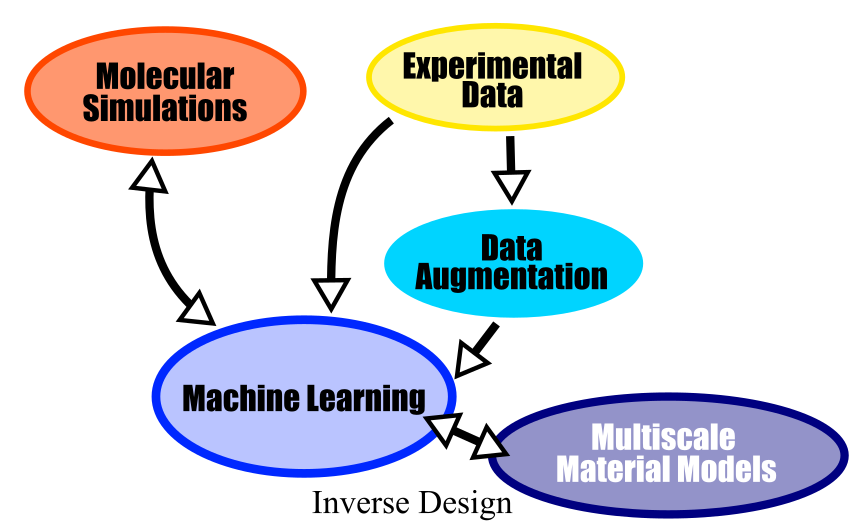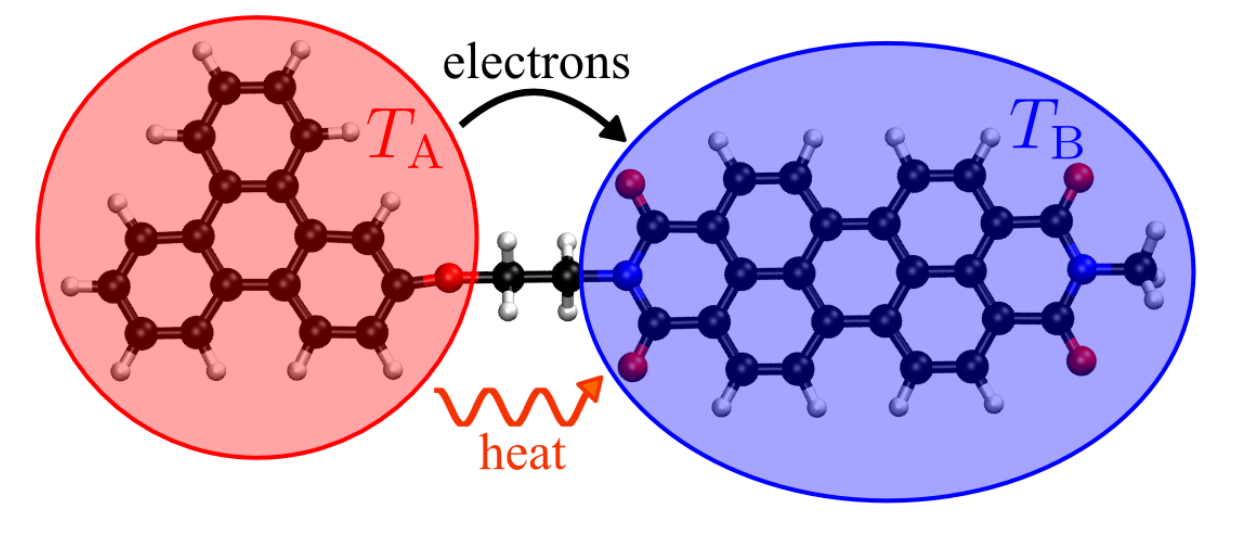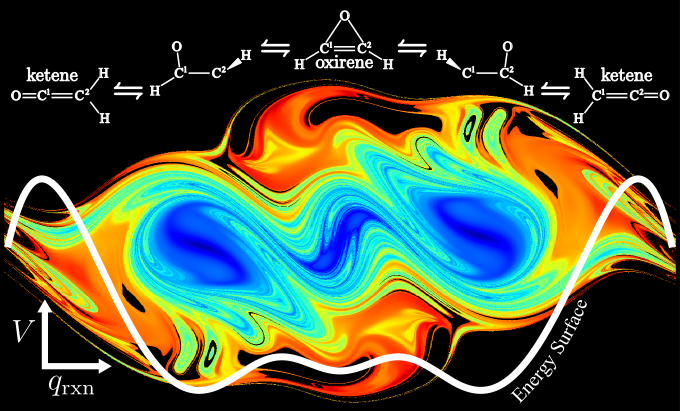Machine Learning for Emerging Energy Technologies
 Designing new energy technologies is a complex and time-consuming task because the performance of the components in
these systems must be analyzed not only at the atomistic scale but also at the engineering scale.
Therefore, designing new energy technologies involves a complex multiobjective optimization over multiple physical length scales.
This problem is further pronounced because searching the vast chemical space of potential molecules and materials and accurately predicting how they perform
is difficult and time-consuming using traditionally human-guided approaches.
With a specific focus on carbon-free energy sources and nuclear energy,
my group leverages the power of machine learning algorithms to optimize the efficiency, safety, and reliability of new energy technologies.
Designing new energy technologies is a complex and time-consuming task because the performance of the components in
these systems must be analyzed not only at the atomistic scale but also at the engineering scale.
Therefore, designing new energy technologies involves a complex multiobjective optimization over multiple physical length scales.
This problem is further pronounced because searching the vast chemical space of potential molecules and materials and accurately predicting how they perform
is difficult and time-consuming using traditionally human-guided approaches.
With a specific focus on carbon-free energy sources and nuclear energy,
my group leverages the power of machine learning algorithms to optimize the efficiency, safety, and reliability of new energy technologies.
 Conventional circuits use electronic currents to perform operations.
In thermoelectric circuits, these currents are generated by applying a temperature bias, which induces electron transport.
The efficiency of thermoelectric conversion, however, is often poor and results in weak electrical currents.
To overcome these issues, a new paradigm has recently been proposed in which instead of using temperature differences to induce electric currents,
thermal energy itself is used to perform operations.
We examine ways of harnessing heat to directly perform operations in thermal devices.
We build models of molecular thermal rectifiers and transistors, and then apply optimization algorithms to design heat
circuits that operate with maximal efficiency.
Conventional circuits use electronic currents to perform operations.
In thermoelectric circuits, these currents are generated by applying a temperature bias, which induces electron transport.
The efficiency of thermoelectric conversion, however, is often poor and results in weak electrical currents.
To overcome these issues, a new paradigm has recently been proposed in which instead of using temperature differences to induce electric currents,
thermal energy itself is used to perform operations.
We examine ways of harnessing heat to directly perform operations in thermal devices.
We build models of molecular thermal rectifiers and transistors, and then apply optimization algorithms to design heat
circuits that operate with maximal efficiency.
 In numerous molecular systems that are relevant for emerging energy technologies, the current state-of-the-art methods that are used
to calculate chemical reaction rates either fail or give inaccurate results.
Accurately determining reaction rates is often a critical step for predicting how molecules and materials change over time,
and therefore for understanding their functionality.
It is of great importance to understand nonequilibrium reactions since many chemical processes occur under nonequilibrium conditions.
While the reaction rate problem is essentially solved for systems in thermodynamic equilibrium,
in nonequilibrium cases there is currently a void of suitable theoretical approaches.
We work to solve this problem by applying fluid dynamics methods,
specifically, flow field analysis, to the results of atomistic simulations in order to determine chemical reaction rates.
In numerous molecular systems that are relevant for emerging energy technologies, the current state-of-the-art methods that are used
to calculate chemical reaction rates either fail or give inaccurate results.
Accurately determining reaction rates is often a critical step for predicting how molecules and materials change over time,
and therefore for understanding their functionality.
It is of great importance to understand nonequilibrium reactions since many chemical processes occur under nonequilibrium conditions.
While the reaction rate problem is essentially solved for systems in thermodynamic equilibrium,
in nonequilibrium cases there is currently a void of suitable theoretical approaches.
We work to solve this problem by applying fluid dynamics methods,
specifically, flow field analysis, to the results of atomistic simulations in order to determine chemical reaction rates.
 My research group models the thermodynamic and kinetic properties of complex molecular systems using stochastic thermodynamics.
Using stochastic methods, we aim to provide fundamental insights into the behavior of systems far from equilibrium.
We employ a multifaceted approach, combining analytical mathematical modeling (our favorite) with state-of-the-art atomistic simulation methods.
The developed analytical models give fundamental phenomenological insights while molecular dynamics simulations
are used to make quantative predictions about a system's performance and properties.
By applying stochastic processes to model thermodynamics,
we aim to unravel the intricate dynamics of energy transport and conversion, enabling informed decisioning making at the engineering scale and contributing to more efficient and sustainable energy solutions.
My research group models the thermodynamic and kinetic properties of complex molecular systems using stochastic thermodynamics.
Using stochastic methods, we aim to provide fundamental insights into the behavior of systems far from equilibrium.
We employ a multifaceted approach, combining analytical mathematical modeling (our favorite) with state-of-the-art atomistic simulation methods.
The developed analytical models give fundamental phenomenological insights while molecular dynamics simulations
are used to make quantative predictions about a system's performance and properties.
By applying stochastic processes to model thermodynamics,
we aim to unravel the intricate dynamics of energy transport and conversion, enabling informed decisioning making at the engineering scale and contributing to more efficient and sustainable energy solutions.